Recent Articles
Popular Makes
Body Types
2020 Hyundai Sonata Hybrid Road Test and Review
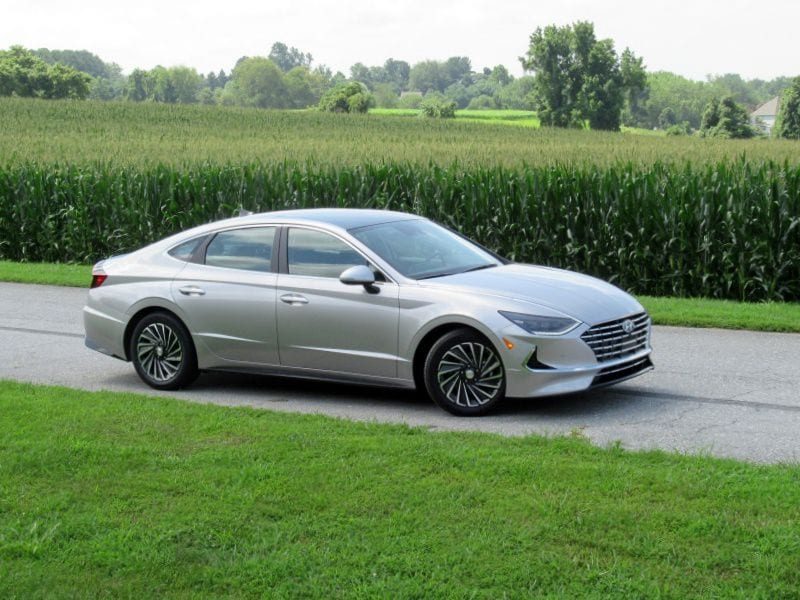
2020 Hyundai Sonata Hybrid ・ Photo by Brady Holt
People are used to buying Hyundais when they want a low price. The Korean brand is a famous success story, turning itself from an automotive off-brand into a top-tier automaker. Still, buyers are used to spending less than they would for a competing Honda or Toyota.
With the fully redesigned 2020 Hyundai Sonata Hybrid, though, Hyundai offers a different sort of value play. Instead of undercutting the competition with its $27,750 base price — which is within a few hundred dollars of the best-selling Toyota Camry Hybrid and $2,000 more than the Honda Accord Hybrid — the new Sonata Hybrid aims to the car you’d just rather have. Its strengths include upscale styling, a high-tech cabin, and unique features like a solar-panel roof. Plus, you get Hyundai’s other perks: three years of free scheduled maintenance and up to 10 years or 100,000 miles of warranty coverage. If an elegant yet spacious mid-size sedan that can get more than 50 miles per gallon sounds interesting, keep reading to see if the new Sonata Hybrid is worth your money.
How It Works
Hyundai has sold a Sonata Hybrid for the past decade, and today’s model represents the sedan’s third generation. The technology has advanced over the years, but the basics of the Sonata Hybrid and its competitors are familiar.
These sedans pair a traditional gasoline engine with an electric motor, whose battery recharges itself as you drive. The electric motor helps drive the vehicle, which can reduce or even eliminate the gasoline engine’s efforts — improving gas mileage. And you never need to plug it in; as on other hybrids, the gasoline engine recharges the battery during the times it needs to run, and the system also recaptures energy from the brakes. The Sonata Hybrid adds another perk: an available solar-panel roof that can add up to two miles of all-electric driving range per day if you’re gentle on the throttle. We were regularly able to cruise or even slightly accelerate without needing the gasoline engine at all, but some hybrids let you accelerate more quickly from a stop using electricity than the Hyundai.
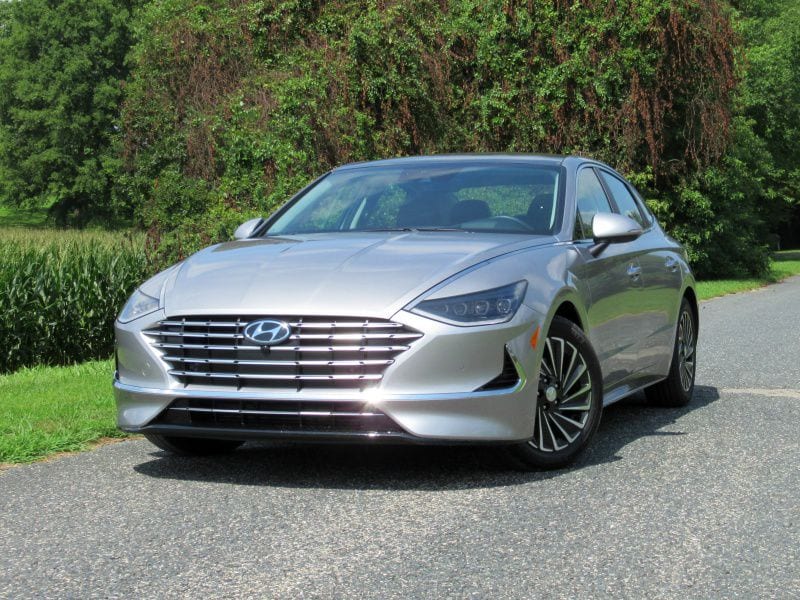
Photo by Brady Holt
Fuel-Sipping Results
Past Sonata Hybrid generations trailed the leading competitors’ EPA fuel economy ratings. Not the new 2020 model.
Its base Blue model achieves an estimated 50 mpg in the city and 54 mpg on the highway, or 52 mpg combined. And other trim levels (whose larger wheels and extra weight reduce their efficiency) score 45 mpg city, 51 mpg highway, and 47 mpg overall. Those figures edge out the Toyota Camry Hybrid, essentially tie the Honda Accord Hybrid, and trounce the Ford Fusion Hybrid and Kia Optima Hybrid that are each around 42 mpg — and last year’s Sonata Hybrid, which brought up the rear at 41 mpg. In our top-of-the-line Sonata Hybrid Limited test vehicle, we averaged an outstanding 53 mpg in a week of mostly eco-conscious driving.
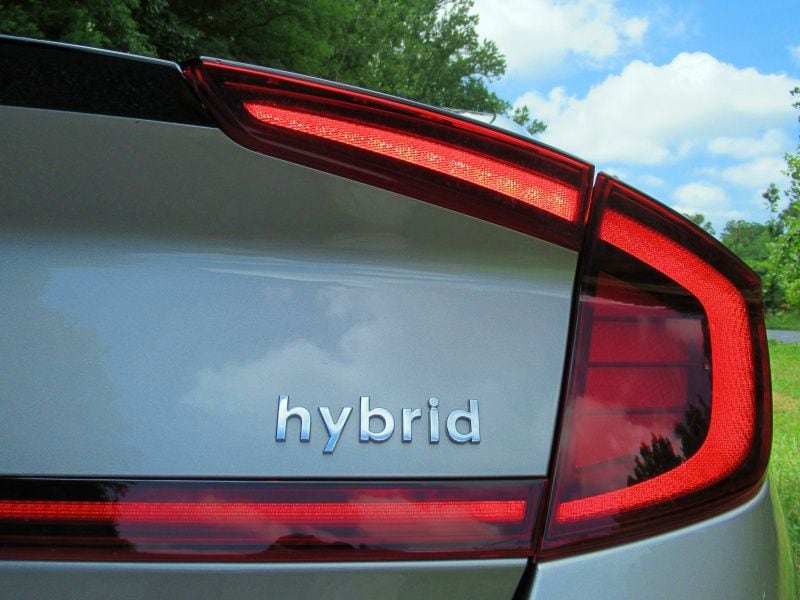
Photo by Brady Holt
Upscale Design
The 2020 Hyundai Sonata Hybrid has nothing to identify its gas-electric powertrain except a small badge. Unlike early Sonata Hybrids but like all its current competitors, it shares its exterior design with the gas-only Sonata.
And the design has been winning awards. After the last-generation Sonata was knocked for overly conservative styling, the new model could pass for a luxury car — classy without being generic or off-puttingly aggressive. Hyundai made the lines crisper than the rounded-off previous generation, and added a unique design theme up front: The LED headlights include a spear that fades into a chrome line up the hood. A chrome bar also wraps around the front bumper below the low hexagonal chrome grille, echoing the rear end’s horizontal light bar. A well-placed crease arcs away from the taillights along the side of the sedan toward the front fender. We can’t promise the design details will age gracefully, but they’re quite striking now. And the Sonata Hybrid’s long, low proportions and gently curved profile are clean and classy.
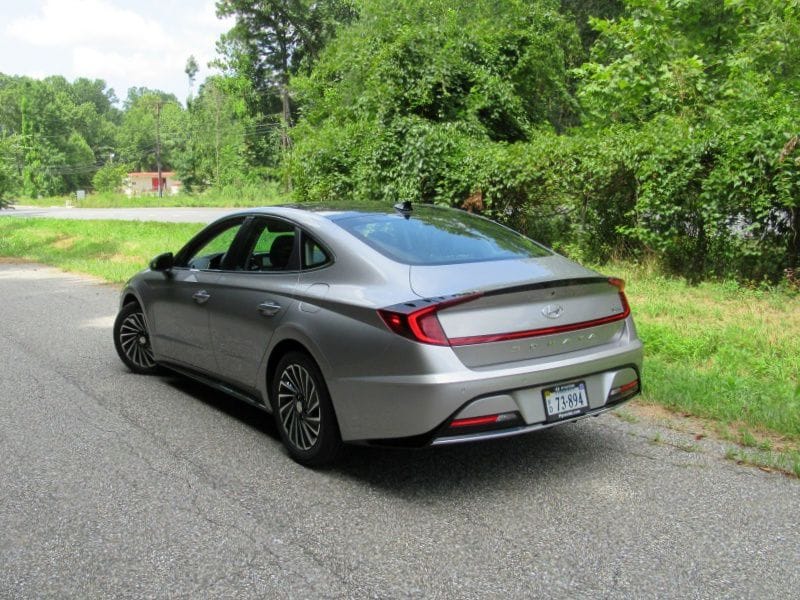
Photo by Brady Holt
Advanced Interior
The 2020 Hyundai Sonata Hybrid’s interior is less adventurous than its exterior, but it’s still suitably high-end. Materials look and feel richer than the mid-size sedan norm, and the dashboard provides user-friendly controls without needing to be too dull.
Highlights on our fully loaded test car include the 12.3-inch digital gauge cluster and the 10.25-inch dashboard touchscreen. They’re useful without overwhelming a technophobe, and the big touchscreen is more user-friendly than smaller systems because you can see more information at once without switching views. Even the base Sonata includes a good-sized 8-inch touchscreen with Android Auto and Apple CarPlay smartphone integration. Some critics bemoan the Sonata Hybrid’s push-button gear selector, but it’s easy to use, and it means there’s no shift lever blocking access to the console storage areas behind it. In another advance, you can use compatible Android phones as a vehicle key and leave the original fob at home.
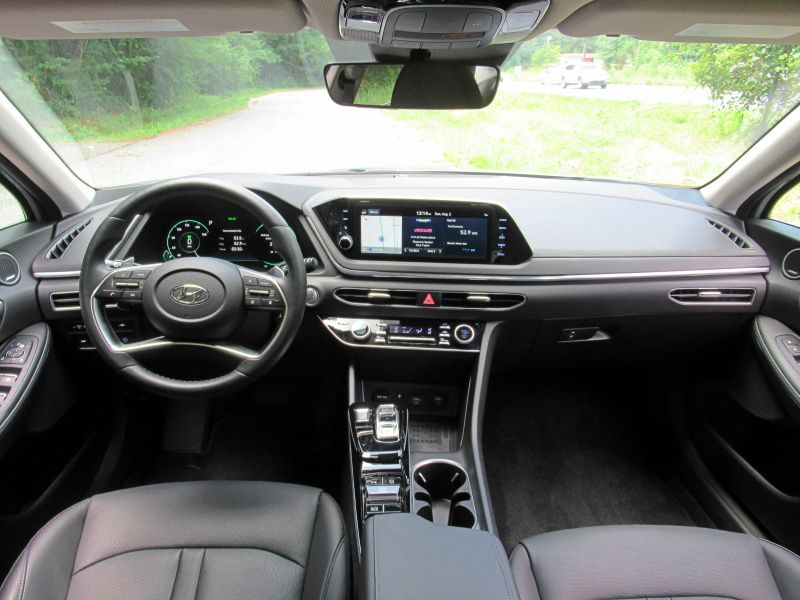
Photo by Brady Holt
Spacious and Comfortable
Some visually striking sedans end up sacrificing their interior spaciousness to achieve a lower, sleeker roofline. But today’s model is a looker that’s also generously roomy for five passengers. The front seats are well-shaped and supportive, and while the rear is a little low, legroom and headroom are plentiful.
There’s even a big trunk, avoiding the flaw that has plagued some hybrid sedans. Last year’s Sonata Hybrid had just 13.3 cubic feet of trunk space, compared to 16.3 cubic feet for the gas-only model. That’s because the hybrid’s electric battery took up space in the trunk. For 2020, the battery moves under the rear seat, so all Sonatas — gasoline and hybrid — have the same ample 16.0 cubic feet.
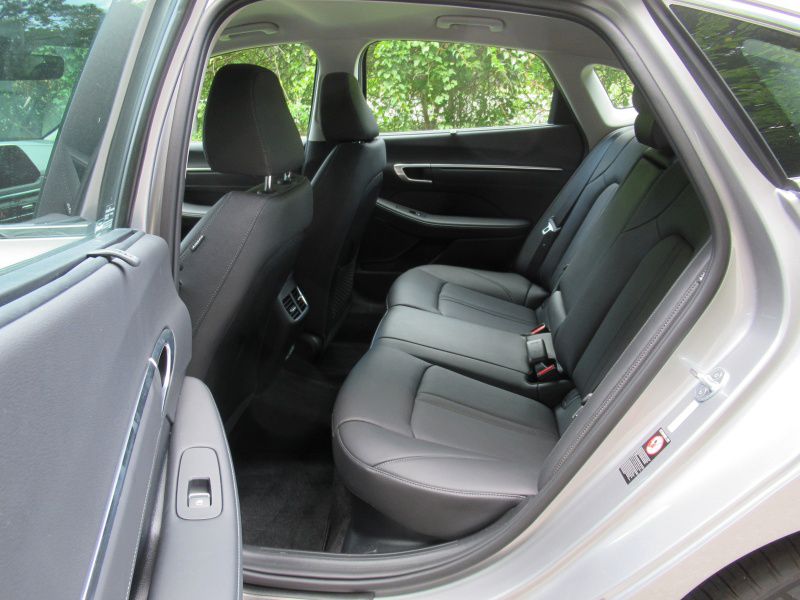
Photo by Brady Holt
Smooth, Quiet, and Agile
The redesigned 2020 Hyundai Sonata drives better than its predecessor. It feels more solid and substantial, matching its more upscale design and better-finished interior. And it’s reasonably agile, too, better than average for the mid-size sedan class. With its bias toward handling sharpness over maximum ride smoothness, Hyundai chased the Honda Accord more than the Toyota Camry.
In hybrid guise, the Sonata does give up a little bit of its verve. That’s because the powertrain — a 2.0-liter 150-horsepower four-cylinder gas engine mated to a 51-hp electric motor — is best-suited for a hybrid when you select the car’s Eco mode, but the steering feels sharper in Smart or Sport modes. Acceleration feels natural whether you’re trying to maximize mileage or just get around normally, and the conventional six-speed automatic provides a familiar feel compared to competitors’ continuously variable transmissions. And the engine is quieter than many hybrids, though the Sonata’s available turbocharged engine is even quicker and quieter.
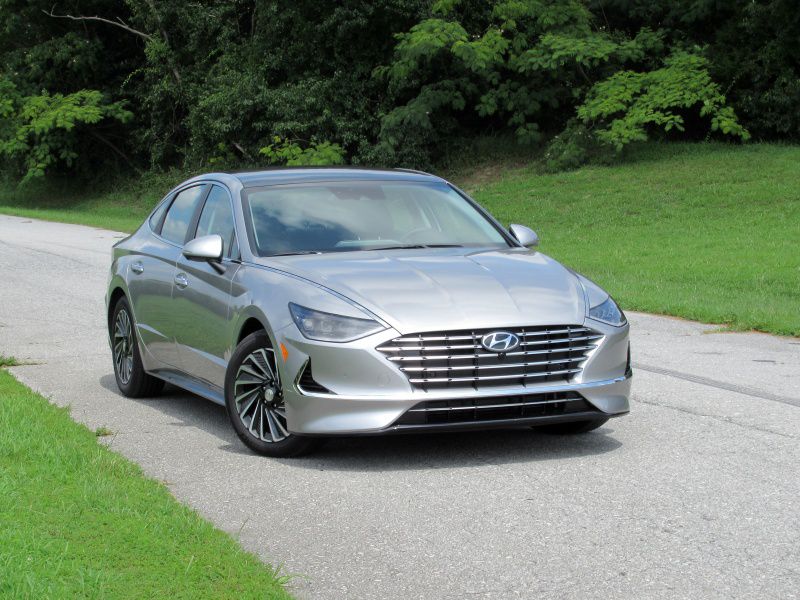
Photo by Brady Holt
Affordable Safety
The 2020 Hyundai Sonata Hybrid is priced from $27,750, a $2,000 price jump from last year. But it’s worth it. Not only do you get a more luxurious atmosphere and superior gas mileage, but you also get a full suite of advanced safety features as standard equipment that had previously been exclusive to the top Limited model.
Now, every Sonata Hybrid includes adaptive cruise control, a forward-collision warning with automatic emergency braking, a lane-keeping system, a driver-attention monitor, and blind-spot monitoring with a rear cross-traffic alert. Other standard equipment includes automatic climate control, the 8-inch touchscreen, and push-button start. The SEL ($29,900) adds a leather-wrapped steering wheel, a power driver’s seat, heated front seats, a wireless smartphone charger, and a 12-speaker Bose sound system, along with the smartphone-as-key functionality. Our Limited test vehicle, $35,300, brings leather upholstery, ventilated front seats, the bigger infotainment screen with navigation, a heated steering wheel, and the roof-mounted solar panels. Plus, this trim’s safety add-ons include a blind-spot camera that activates when you use your turn signal, rear automatic braking, and a surround-view parking camera.
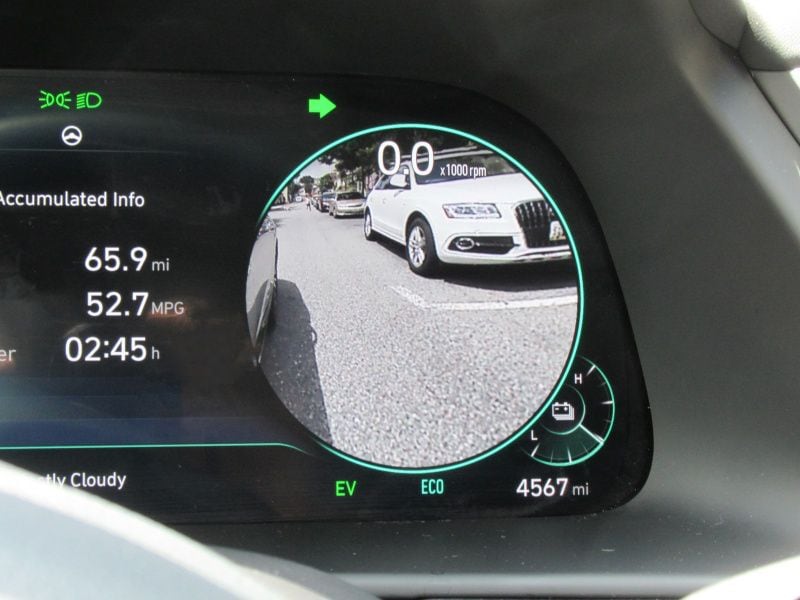
Photo by Brady Holt
Fellow Fuel-Sippers
You have a surprising wealth of choices among mid-size sedans that use less fuel than a subcompact. The most popular Sonata Hybrid rival is the Toyota Camry Hybrid, which originated the market segment back in 2007. Today’s Camry Hybrid stands out for combining cushy comfort with decent handling poise, but the Hyundai is significantly more upscale.
The Honda Accord Hybrid is another strong challenger, coming out swinging by undercutting the Hyundai’s price. And its handling is the liveliest in this segment. However, the Sonata is posher and has superior infotainment. The Ford Fusion Hybrid, though it’s changed little since 2013, remains a segment leader for comfort and luxury, but it trails the Sonata’s gas mileage. To turbocharge your fuel savings, you can also consider the Honda Clarity Plug-In Hybrid, which can travel nearly 50 miles on solely electricity per charge. (The Sonata Hybrid used to also offer a plug-in variant but it’s not currently available.) The Clarity has clunky infotainment, though, and it gets a mediocre 42 mpg on longer trips after you’ve used up the electric range.
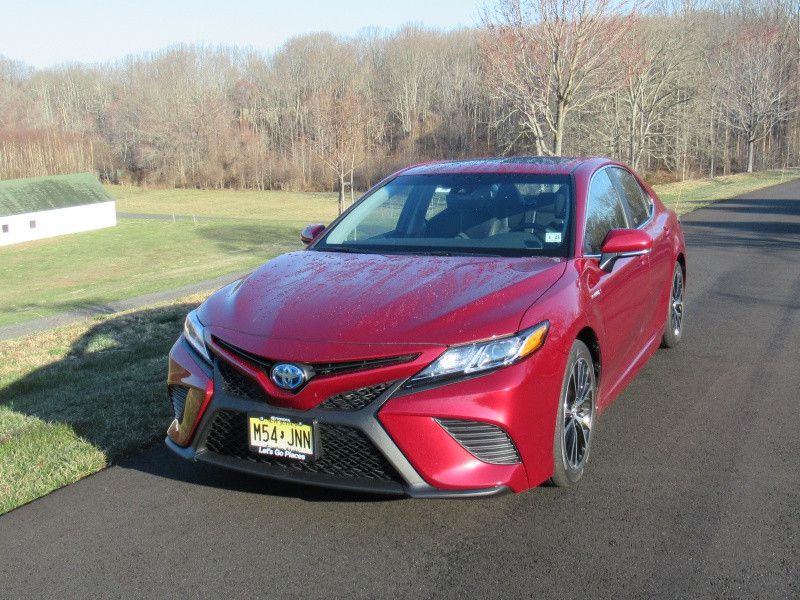
Photo by Brady Holt
Choosing the Hybrid
The other top competitor against any hybrid is a gasoline-powered car. While some buyers are happy to save fuel for environmental reasons, others demand hybrids where the economics work out. With the 2020 Hyundai Sonata Hybrid, you pay roughly an extra $4,000 for the Blue and SEL trims, while the Limited has a modest $1,800 premium. That means if you want all the luxury features, you might as well get the mega mileage, since the Sonata Hybrid has few downsides compare to other Sonatas except the price premium.
The other consideration is your driving. If you mostly drive on the highway, even a gas-only Sonata can manage nearly 40 mpg. But if you have a lot of stop-and-go conditions, the hybrid’s ratings of 45 to 50 mpg are a more significant jump from the gas engines’ 27 to 28 mpg. Lastly, you’ll have to decide whether you want the Sonata or another hybrid. This year’s redesign ups the car’s style and substance, making it a stronger candidate than ever — even if it’s no longer the least expensive.
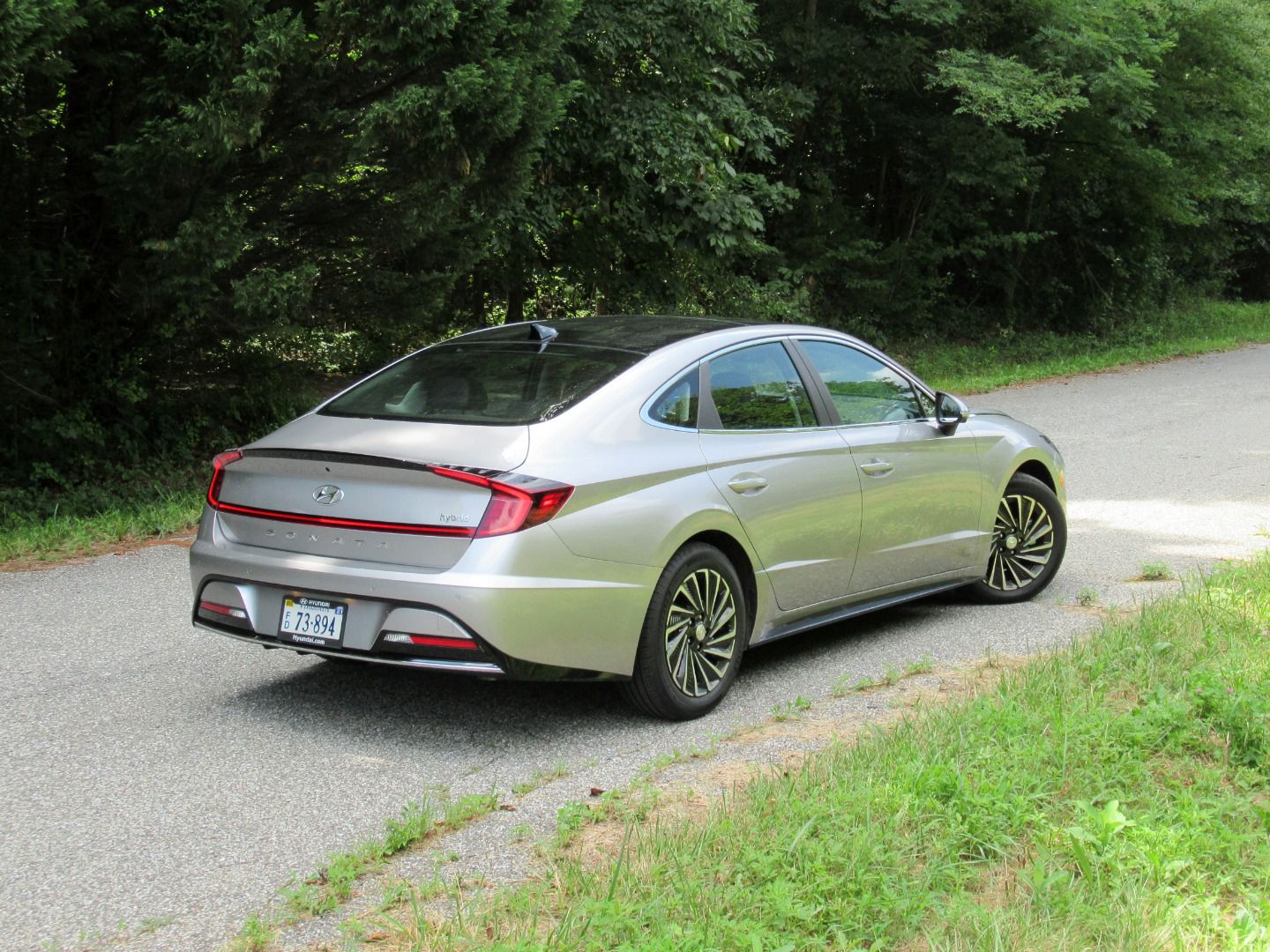
Photo by Brady Holt